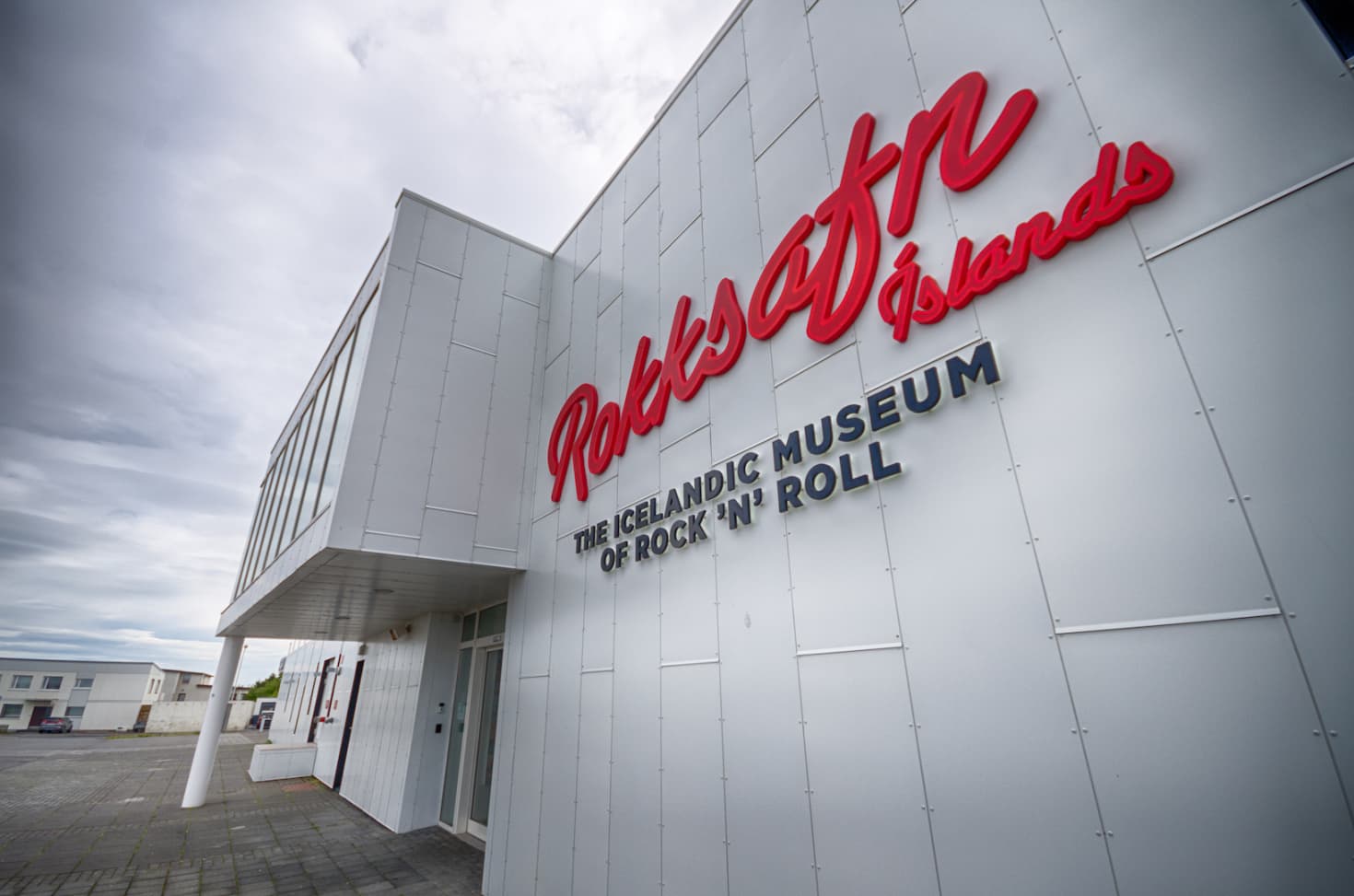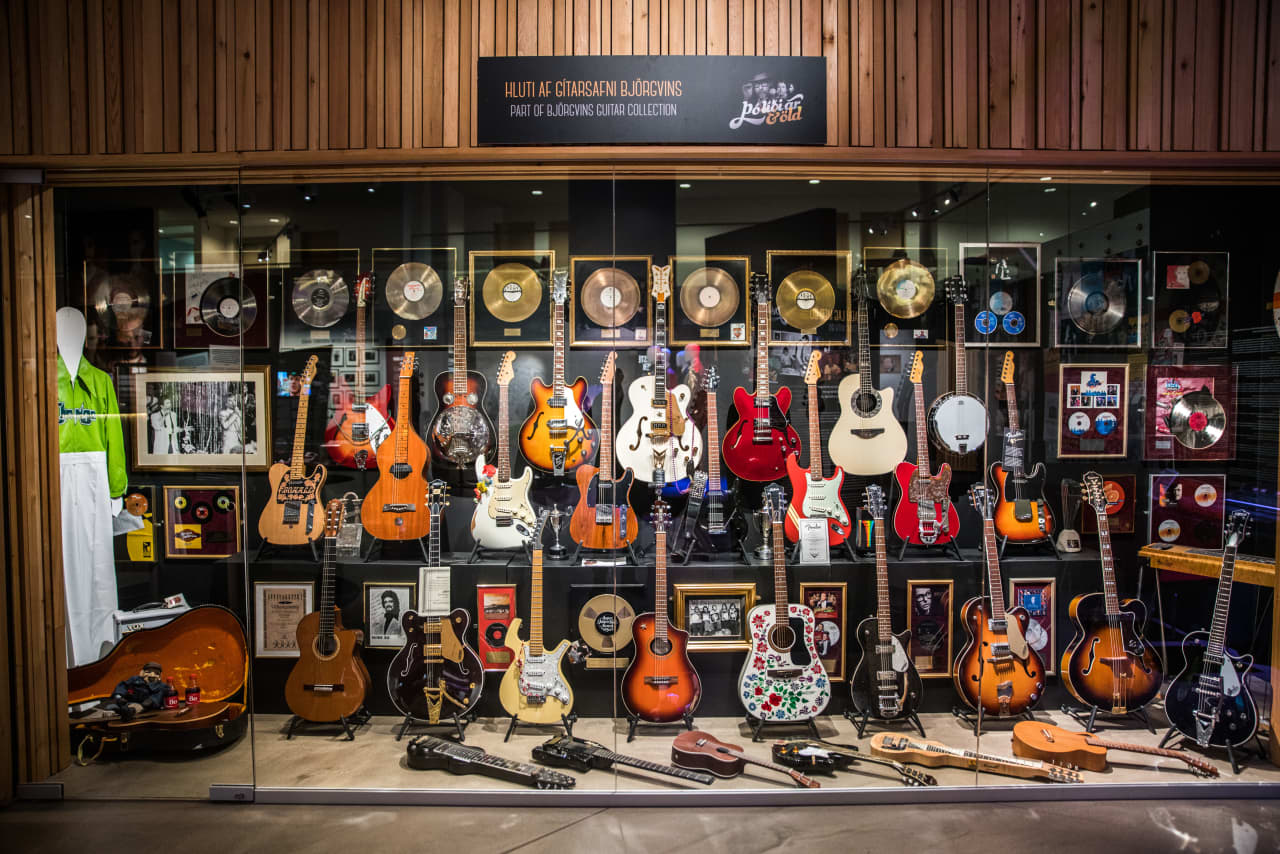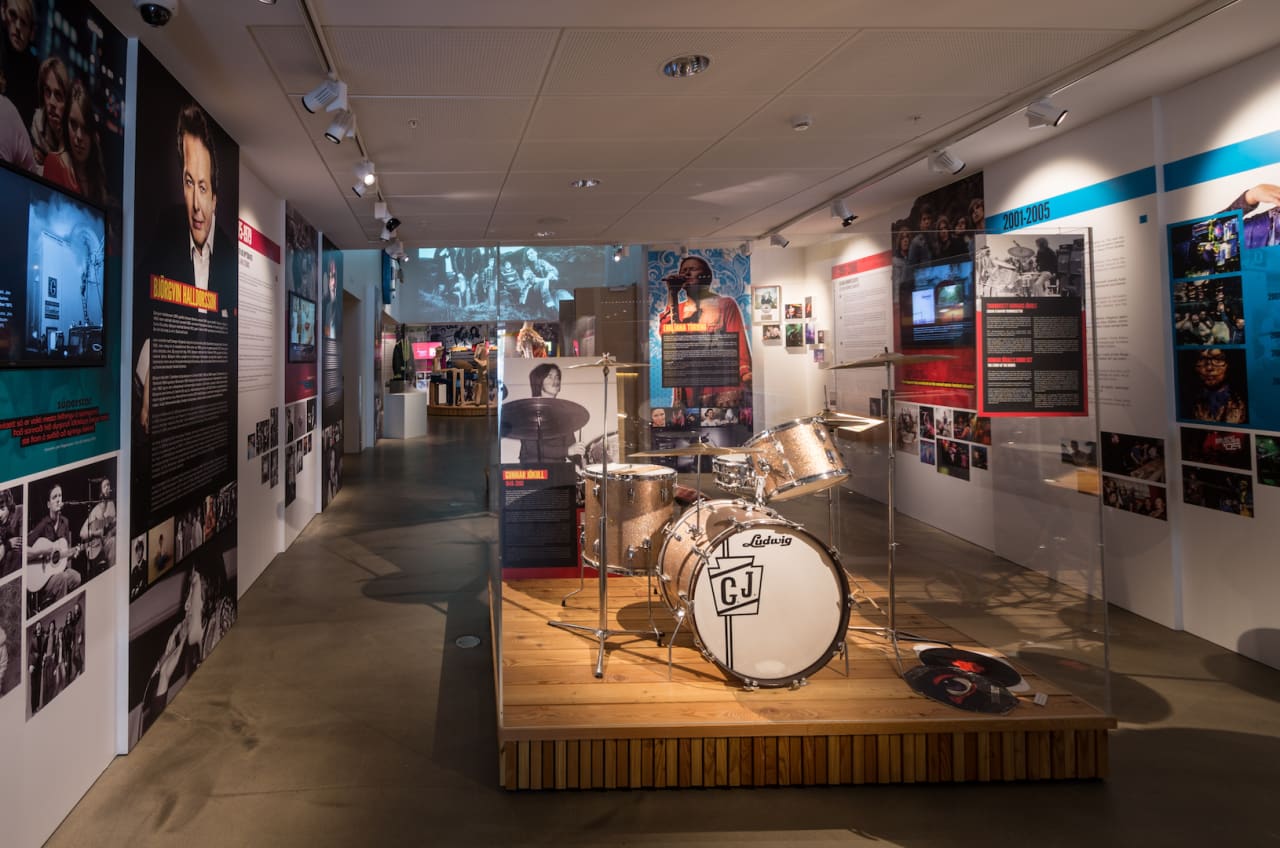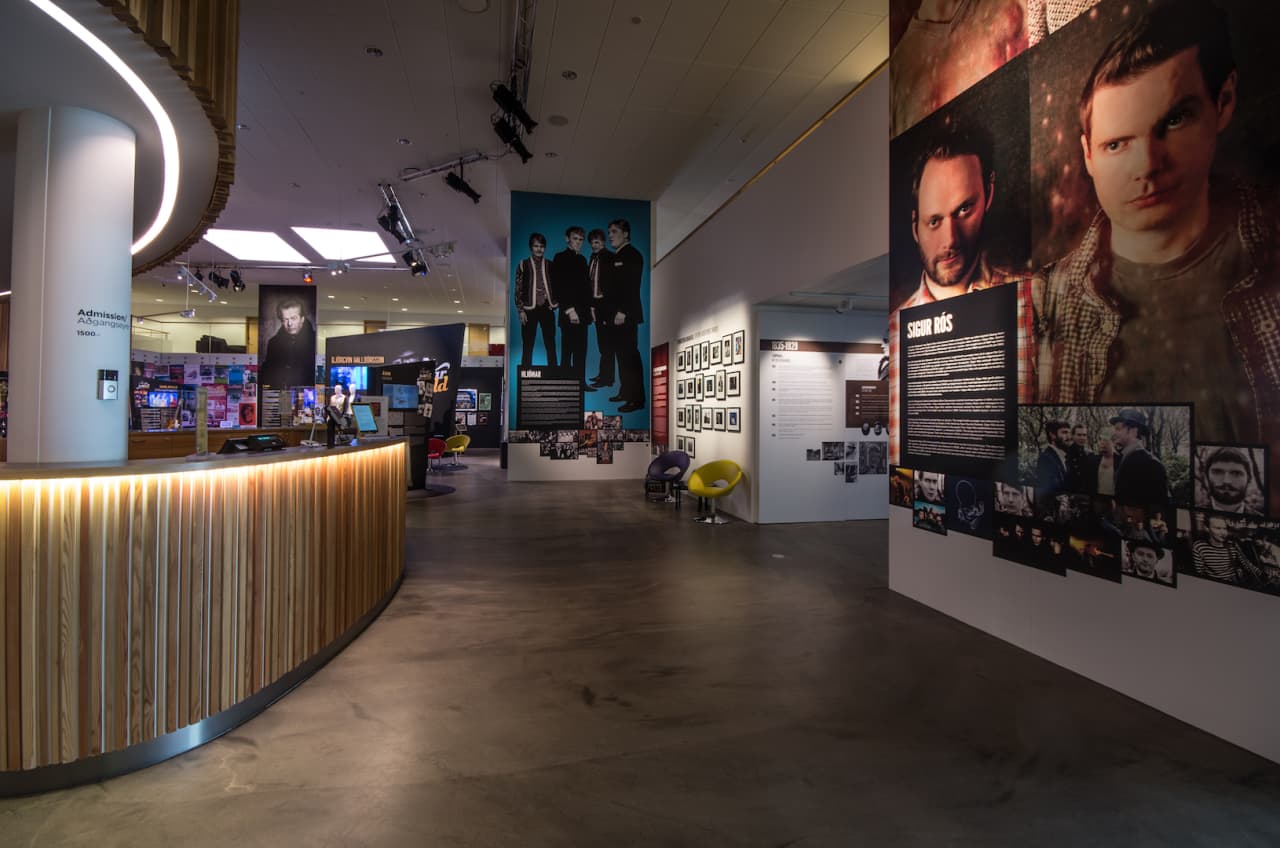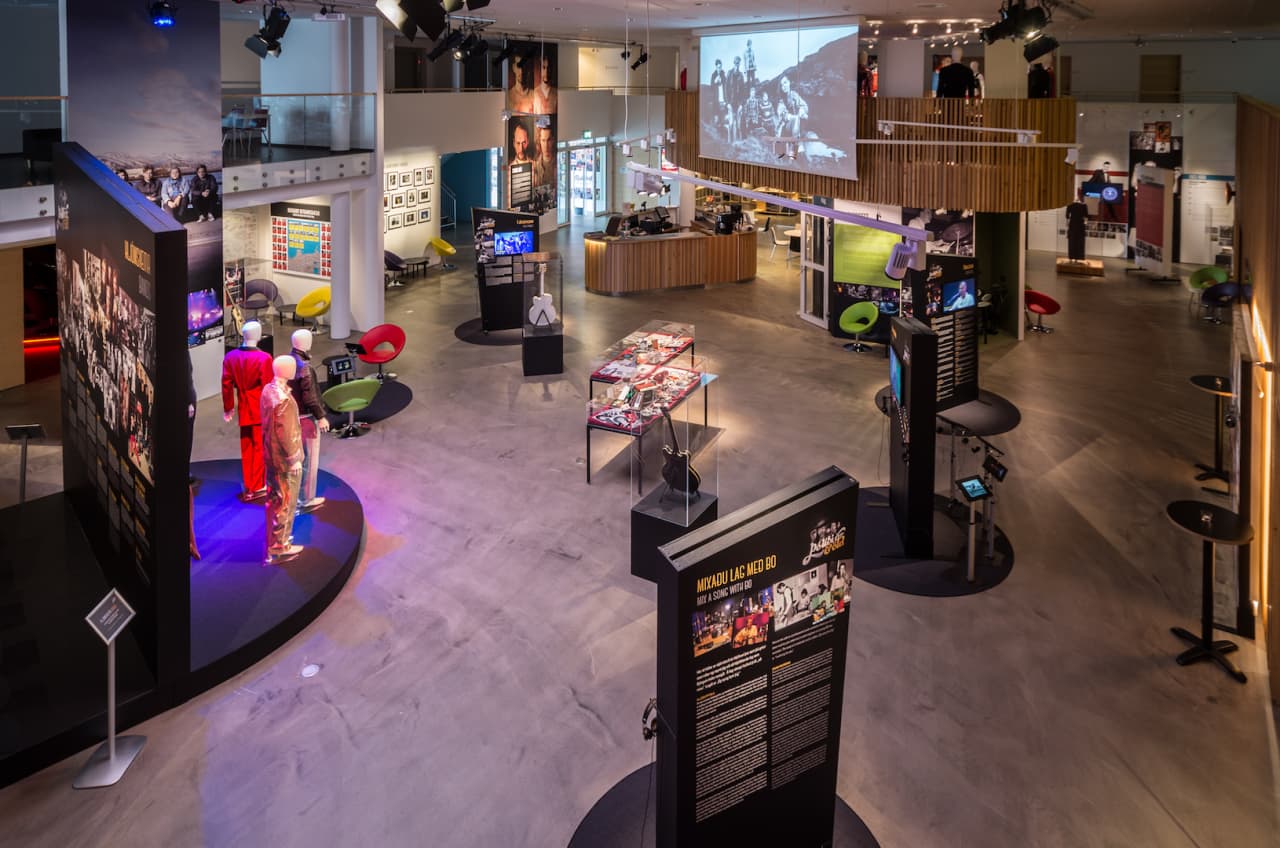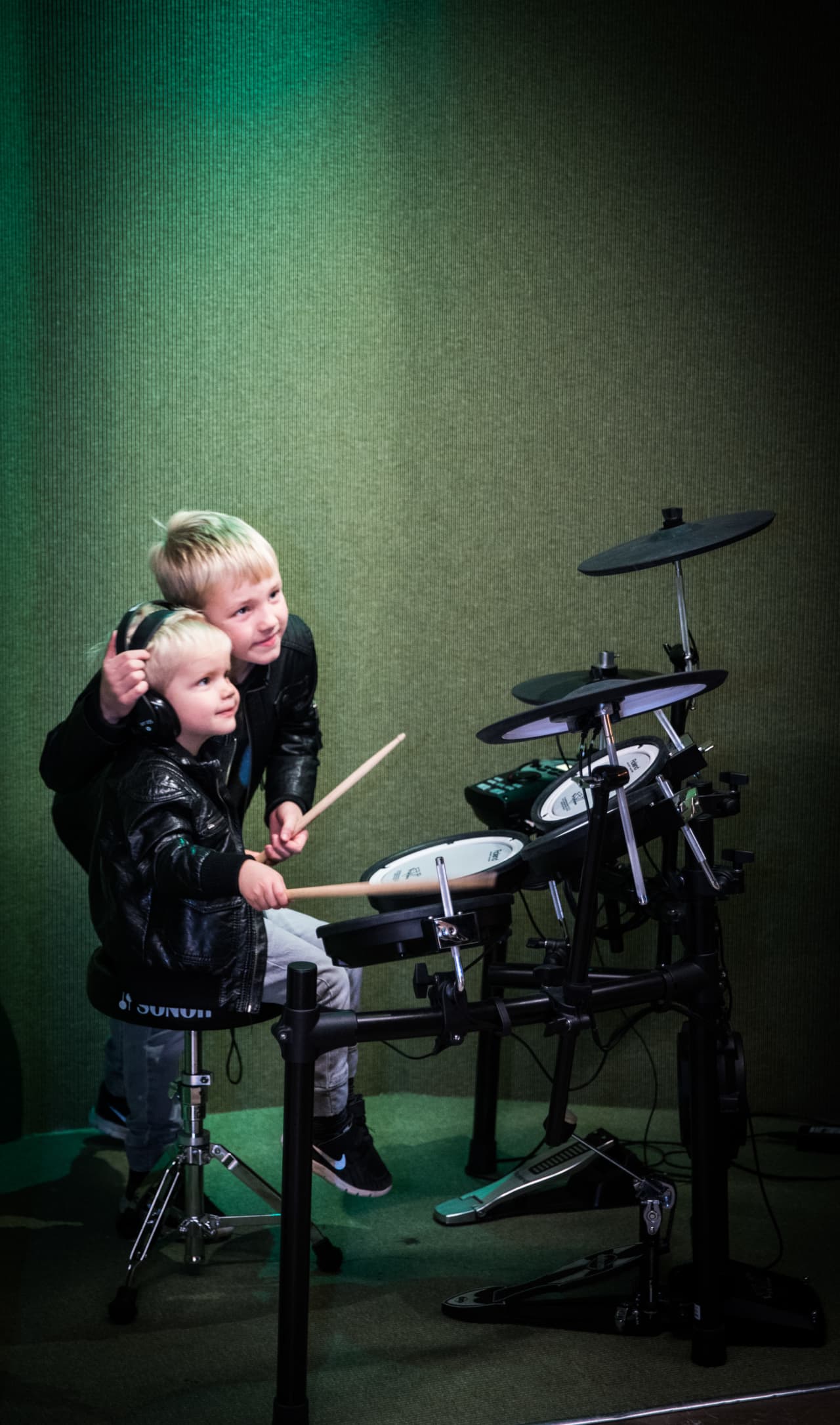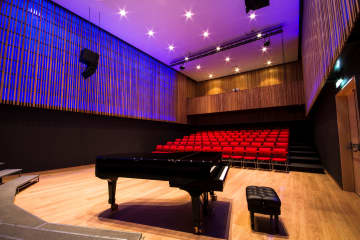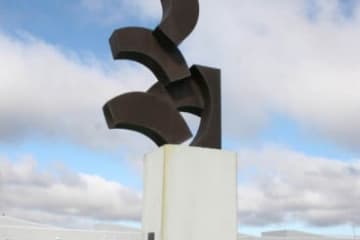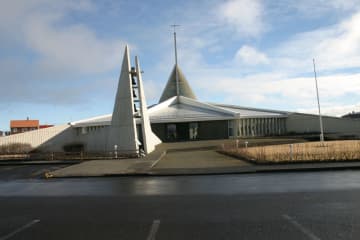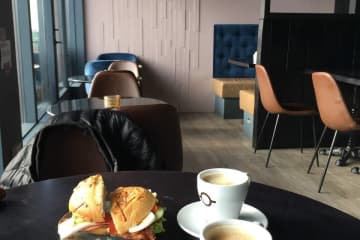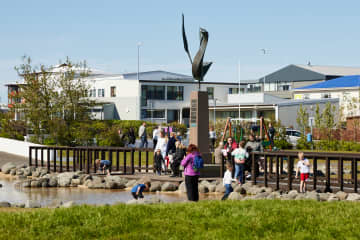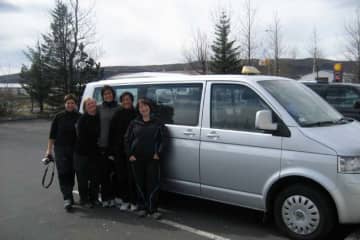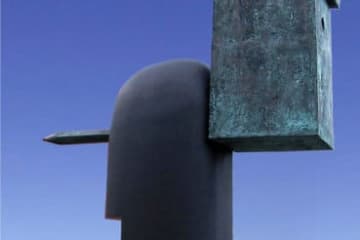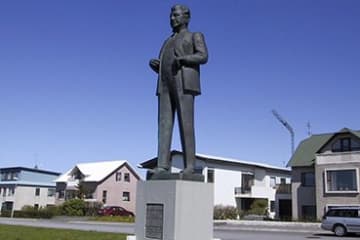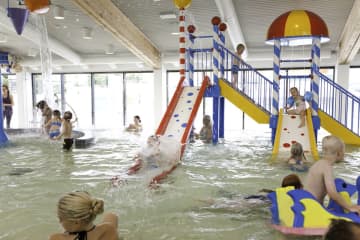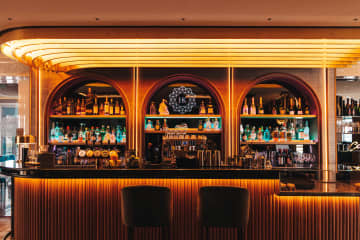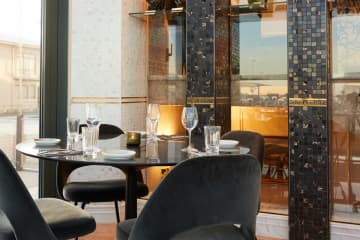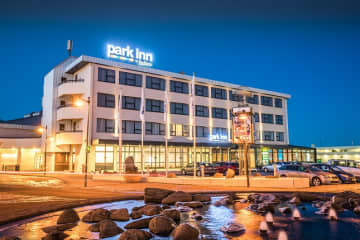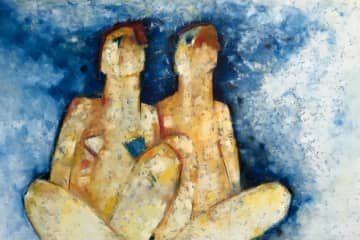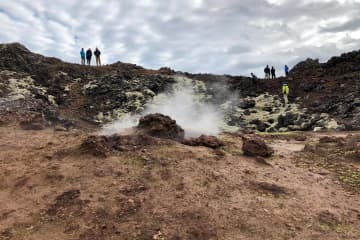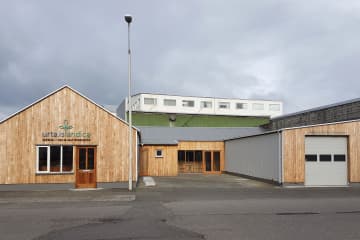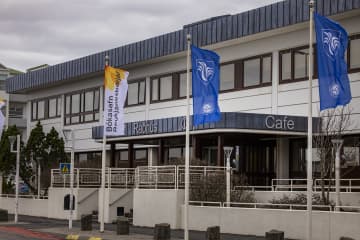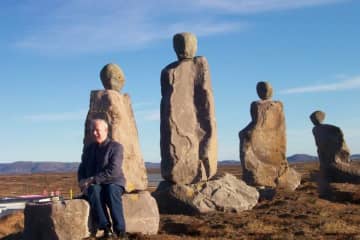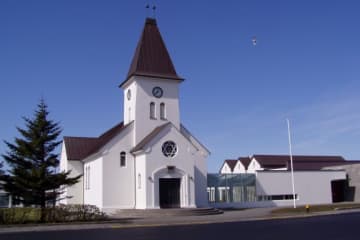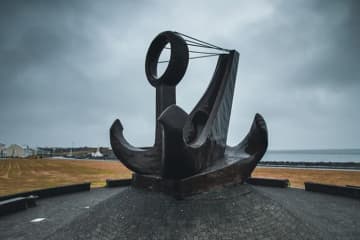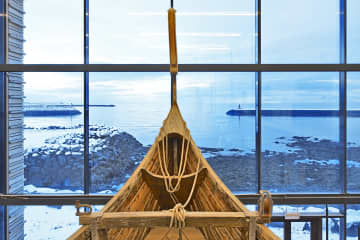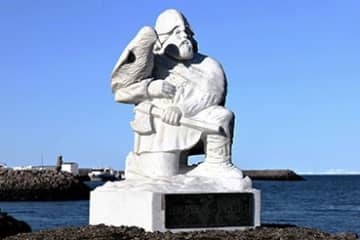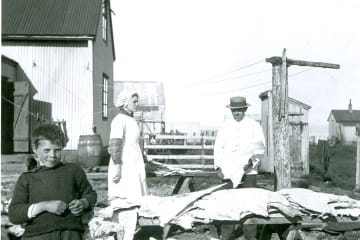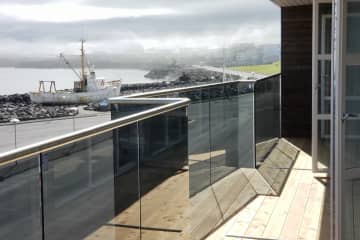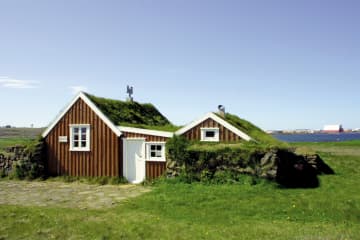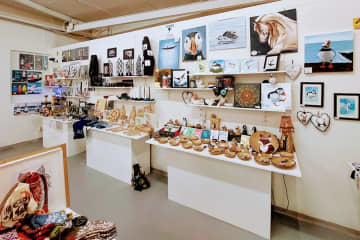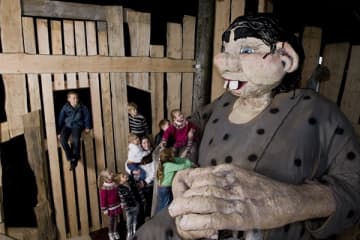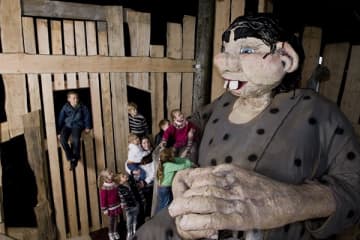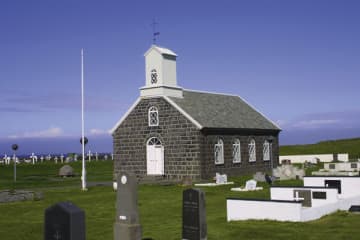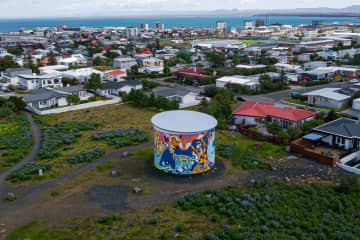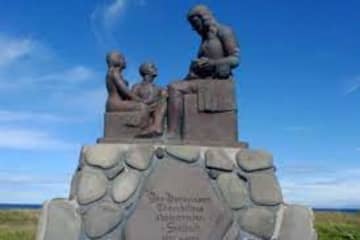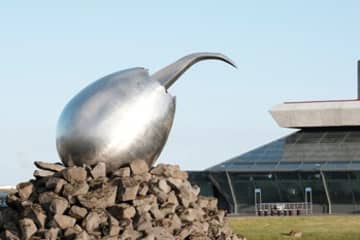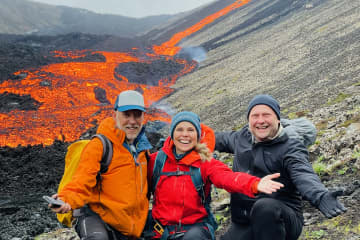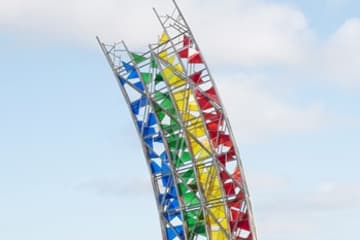The Icelandic Museum of Rock ‘n’ Roll (Rokksafn Íslands) is a new museum about the history of popular music in Iceland. The museum was opened in 2014 and is located in Keflavik in Reykjanesbær, only a 5-minute drive away from Keflavik International airport.
The museum’s main attraction is a timeline of Iceland’s popular music history. Visitors who would like to dive deeper into the history can get an iPad guided tour to read more and listen to the music throughout Iceland’s history. Other attractions include the very popular sound lab where guests can try instruments such as an electric drum kit, electric guitar and electric bass. There’s also a karaoke singing booth where guests have the possibility to sing and record video of the themselves and send it directly to their email address or social media. Guests can also visit the museums’ cinema where documentaries about Icelandic music run all day long, try out interactive solutions to dive deeper into the history of featured artists such as Björk, Sigur Rós, Of Monsters and Men, Kaleo and many more, get an insight into what it is like to be an audio engineer on a mixing desk that features Icelandic music and visit the gift shop where there are books, DVD, CD’s and LP’s with Icelandic music along with various museum merchandise. At the museum guests can sit down, listen to the music and have a cup of coffee... or tea... or hot chocolate, whichever sounds good. The museum café offers coffee from Kaffitár which is a local roasterie, specializing in importing, roasting and serving the finest Arabica coffee beans.
The Icelandic Museum of Rock 'n' Roll is for everyone. For those who love Icelandic music and those who want to discover Icelandic Music.
Children find the sound lab particularly interesting along with the interactive parts of the museum.
The museum is open daily all year round except for New Year's Day, Good Friday, Easter Day, Christmas Eve, Christmas Day and New Year’s Eve. Opening times are 11am-6pm daily.
“The Icelandic Museum of Rock ‘n’ Roll is as eccentric in its telling as the tale it celebrates.” David Fricke, Rolling Stone.

